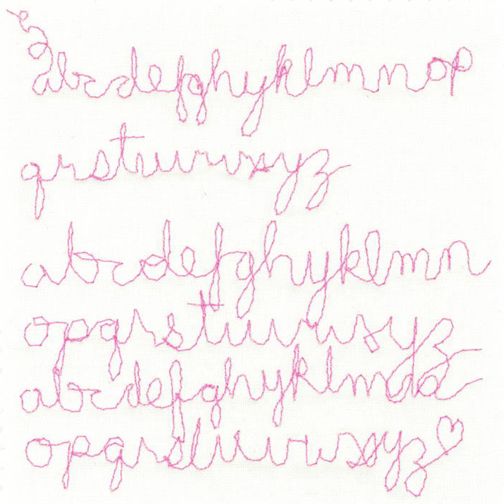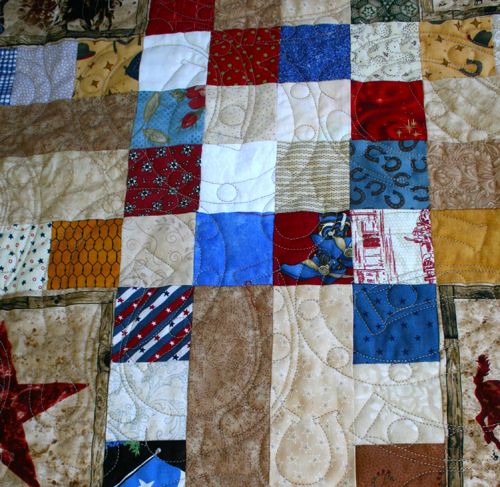Free-motion Friday | Inside Quilters Newsletter

I have recently been trying to improve my free-motion quilting skills. I went ahead and invested in a darning foot and I am ready to be great at it! I am definitely one of those people who wants to be good at something the minute I try it, but it has not been as easy to do as I had hoped. Everyone seems to want tips and tricks to somehow simplify free-motion quilting, but all the experts of free-motion quilting say the same thing. Practice. There really is no way around it.
Now, not to toot my own horn, but I am a pretty good doodler. I’ve been an asset to every Pictionary team I’ve ever been on. But putting pen to paper is way different than sketching with a needle and thread. For one thing, the needle stays in one place while the surface is moved around. If you are not careful, that needle could really hurt you, giving the whole enterprise a slight sense of danger. And what I’ve had a rough time with is getting the speed of the needle to work with the speed that I am moving the fabric.
So I’ve been practicing, as well as researching, and there are a few tips that I can share. When I interviewed Lorilynn King for our April/May 2013 issue, she recommended using a dedicated quilt sandwich and marking the date when you start practicing on it. If you keep using the same piece and put a few minutes of free-motion stitching practice on it regularly, you will see improvement which will encourage you to practice more. I do think it’s a helpful tip as I’ve been doing this at home, but the core of the advice is – wait for it – practice.
Another thing I’ve been doing that helps me is having several small quilt sandwiches by my machine and using those as a ‘warm-up’ before I start stitching on my actual project. I try some swirls and squiggles and then I write the alphabet, several times if I have too. Just as you are advised to stretch and warm-up before exercise or any physical activity to get ready for the serious work your body will be doing, if you warm-up before diving into free-motion quilting you are better prepared for it. More practicing.
While none of my alphabets are perfect, I see an improvement in the shapes, size and consistency of the letters, as well as the stitch length. Yes, I did replace ‘x’ with a letter of my own invention, but I’ll just chalk that up to creativity.
In our August/September 2012 issue, we had a great Workshop article by Leah Day about free-motion flowers. Talk about practicing free-motion quilting – this lady doesn’t mess around. Her work is so beautiful! Her Free-Motion Quilting Project is one of the best resources online for everything to do with free-motion quilting, and I highly recommend checking it out. However, in the magazine she gave a number of useful tips, too many to list here, but one that I found helpful and that I’ve been using at home is this:
“The only setting on my machine that I change before I start free-motion quilting is my stitch length, which I turn down to zero. This disengages the feed dogs without completely dropping them. I find that dropping the feed dogs interferes with the thread tension and I end up struggling to get good stitch quality. I saw a huge improvement in my tension and stitch quality when I started leaving them up.” Nothing said about practice, though she covers that in her other helpful hints, for sure.
So the best way to get better at free-motion quilting is to do it. I find that busy fabric patterns and crazy quilt style piecing is pretty forgiving, so I’ve been practicing on some ‘real’ pieced projects, similar to Mary Kate’s practicing on doll quilts. It’s a simple project without a huge investment, but simple projects need to be quilted also, making it a win-win.
Ultimately, as long as people are quilting, period, that’s good enough for me. Whether you prefer to hand quilt, machine quilt (straight lines or free-motion) or quilt exclusively on a longarm machine, please continue doing it! And please share it because we love everything to do with quilting–visit The Quilting Company on Facebook, Instagram, Twitter, Pinterest, and YouTube. Oh, and if you have any free-motion quilting tips (besides practicing) please let me know. I can use all the help I can get! Happy quilting!

Join the Conversation!